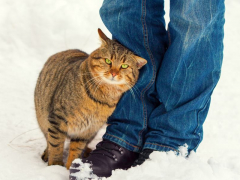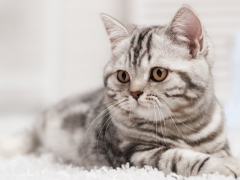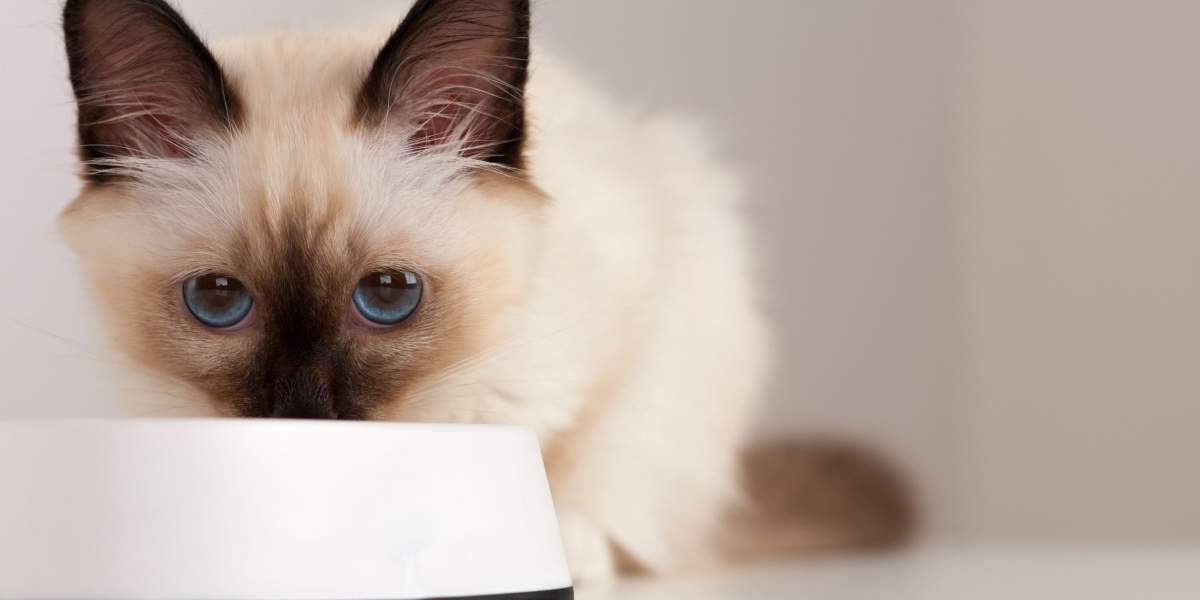
If you are a soon-to-be kitten owner, fostering orphaned kittens or breeding your cat for the first time, you will undoubtedly have lots of questions, especially regarding the kittens’ diet and when kittens start eating.
Typically, kittens show interest in solid food at around 4 weeks old.
The transition from mother’s milk or kitten milk replacer to food should be gradual.
Do not give kittens cow, goat, or vegan milk as part of the weaning process.Quick Overview
Did you know kittens begin to show an interest in solid food as early as 4 weeks old? This article will cover everything you need to know about weaning kittens and what to do nutrition-wise to give them the very best start in life.
When Do Kittens Start Eating Food?
Newborn kittens get all of their nutrition from their mother’s milk. This starts as colostrum, which is a thick, highly energy-dense first milk. The composition of the milk changes as the kittens get older to meet their growing needs and to ensure they get enough calories for their rapid growth. All of a kitten’s nutritional needs should be met by milk alone for the first few weeks of life. If bottle feeding, a kitten milk replacer formula should be used. Never use human formula or dog formula.
Kittens typically show interest in their mother’s food from around 3 to 4 weeks of age. Usually, this will start with sniffing, licking, or even playing with food initially before eating small amounts. It can be messy, so providing food in an easy-to-clean-up space is always advisable.
At this stage, kittens still depend on their mother for all their nutritional requirements. Gradually, the kitten will wean themselves off of milk and onto solid food. While every kitten is different, they will usually be fully weaned between 5 to 7 weeks of age.
What Food Should I Offer To A Kitten At Weaning?
When introducing solid food to kittens, it is best to introduce high-quality complete kitten food. There are many high-quality brands on the market. Use kitten food, either wet or dry, as it has been specifically developed to meet the complex nutritional needs of a growing kitten.
Adult cat food is unsuitable for young kittens as the ratios of needed vitamins and minerals differ for adult cats compared to the immature life stages. It is not advisable to offer commercial “cat milk,” other forms of milk, or raw diets to kittens. Please note commercial cat milk is designed as a treat and differs from kitten formula that is safe to use.
How To Introduce Solid Food To Kittens
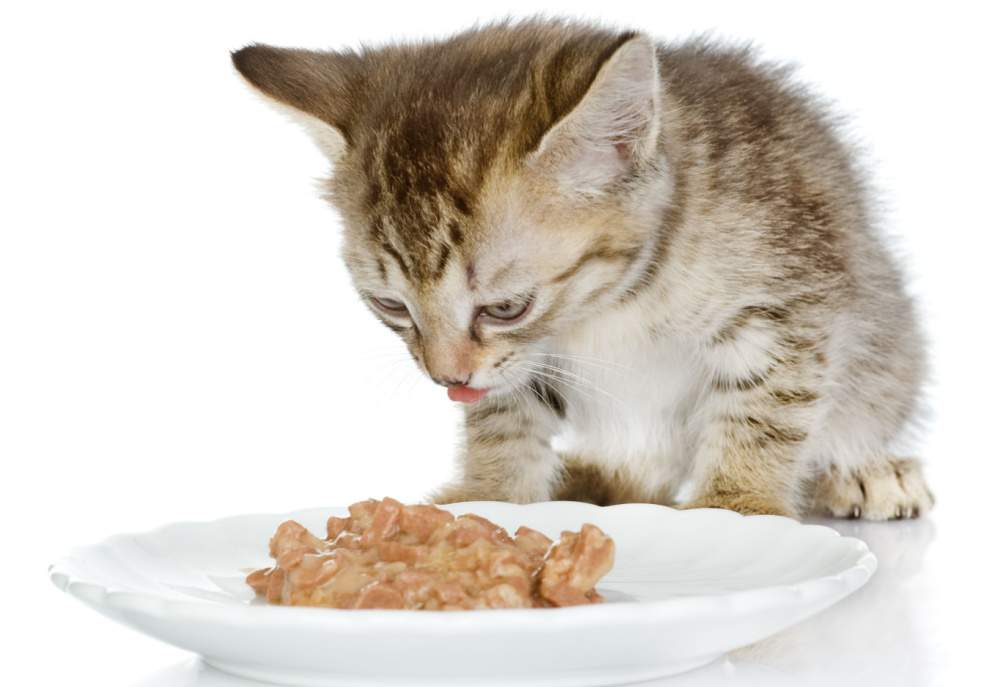
It can take three to four weeks for kittens to transition completely from milk to kitten food.
When your kittens start to show an interest in solid food, it is OK to start giving them access to it. Start by mixing up a kitten gruel initially. This consists of wet kitten food or soaked kibble mixed with water to make an oatmeal consistency mash. Use a flat plastic plate or Tupperware lid rather than a bowl so the kittens can access the food easily.
The kittens will inevitably get messy exploring this exciting plaything in their enclosure. Cleaning them off after exploring the food is often necessary. This can be done with a damp towel or unscented wipe. Make sure you don’t let them get cold while they dry! It is also beneficial to weigh your kittens daily (recommended from birth) to ensure they are growing well.
After the kittens are content eating their kitten gruel, you can gradually reduce the amount of water until they eat only slightly softened food. Feel free to offer unsoftened kibble alongside the softened food at this stage. Also, ensure fresh water is always available; this must be done safely using a very shallow dish to avoid drowning. For more information on weaning, check out this article.
How Long Does It Take For Kittens To Adjust To Solid Food?
Although kittens generally show an interest in solid food from about 3 to 4 weeks old, they still depend on their mother for nutrition via her milk. Kittens might initially eat small amounts while continuing to nurse. Still, over a couple of weeks, their intake will gradually shift from their mom’s milk to almost entirely solid food.
Abrupt weaning is stressful for both mother and kittens, so it should be avoided whenever possible. Usually, the transition to solid food is complete around 6 to 7 weeks of age. As the kittens age, you will notice their mom will spend more time away from them. This is normal. Mother cats should not be forced to stay with their kittens at this stage; they will return to nurse when needed.
Remember, every kitten is an individual and will wean at their own pace. You can ensure a kitten gets the nutrition they need through regular weigh-ins. If you are worried at any point when introducing solid food to your kitten(s), seek advice from your local veterinary clinic.
Wet Food Versus Dry Food During Weaning
You can use wet or dry food when weaning your kittens. Initially, kittens need to have the kibble soaked as their little teeth will find crunching the biscuits difficult. As the kittens progress through their weaning journey, their ability to eat kibble will improve, and by the time they are fully weaned, they can be fed either wet or dry food. The pros and cons of both are discussed here. The most important thing is to use a kitten-specific diet. Raw-feeding kittens is not advisable.
What Happens If A Kitten Is Weaned Too Early?
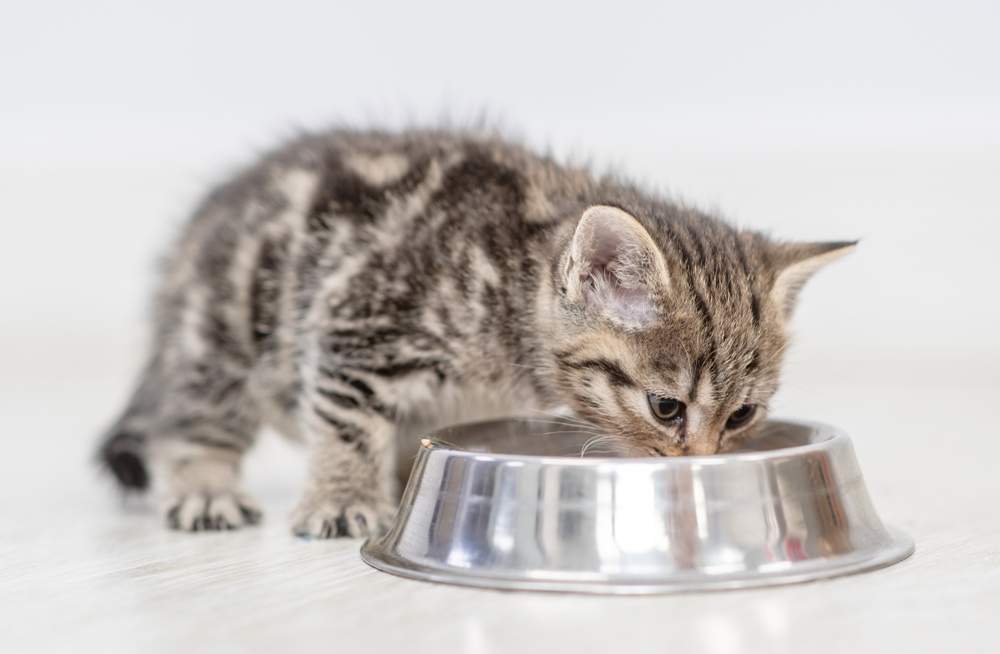
Kittens naturally begin eating more kitten food and take in less milk as they grow older.
If a kitten is separated from their mother too early, kittens may develop health and behavioral problems. This might not always be preventable in some situations, such as those in rescue or foster situations. Still, in a domestic situation, kittens should be left with their mothers as long as possible. A recent study has found that early separation from the mother impacts kittens’ behavior.
Final Thoughts
Introducing solid food to kittens is a necessary part of their development. Weaning should be undertaken gradually from around 4 weeks of age. Kittens are usually fully weaned by 7 weeks of age.
However, kitten nutritional needs are still complex, so make sure to read our complete feeding guide, covering all you need to know regarding feeding from kittens through to senior cats. If you have any questions or concerns about introducing solid food to a kitten in your life, reach out to your local vet for further advice.
Related Articles:
- The 9 Best Kitten Foods Of 2023
- When & How To Switch From Kitten To Cat Food
- The Complete Guide to Bottle Feeding Kittens
Frequently Asked Questions
When do kittens start eating solid food?
Usually, kittens show interest in solid food at around 3 to 4 weeks old.
Will kittens eat solid food on their own?
In most cases, if available, kittens will begin to eat solid food independently. Kittens will generally start to show an interest in solid food if presented to them from around 4 weeks of age.
What should I feed to kittens when weaning?
It is best to offer your kitten high-quality kitten food when you first introduce solid food. Initially, this should be provided as a type of gruel, made up by mixing kitten food with water until it has an oatmeal consistency. Kittens should not be offered “cat milk,” other forms of milk, or any raw-based diets, as these can lead to stomach upset or illness.
-
Martinez-Byer. S. et al. (2023). "Effects of early social separation on the behavior of kittens of the domestic cat." Applied Animal Behaviour Science. DOI: https://doi.org/10.1016/j.applanim.2023.105849
 Fact checked by
Fact checked by


